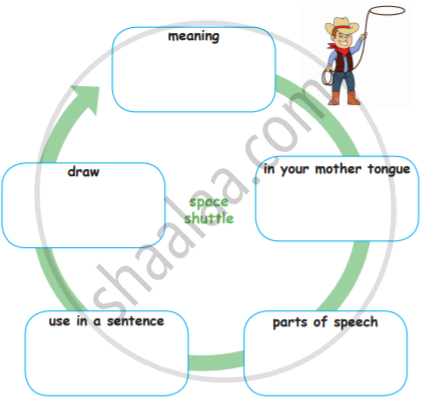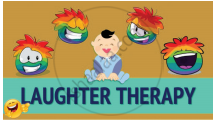Advertisements
Advertisements
Question
Read the given extract (Act III)
Complete the following table.
| Sr. No. | Character | Supportive Character | Incident |
| 1. | Dr. Stockmann |
|
|
| 2. | Peter Stockmann |
|
|
| 3. | Aslaksen |
|
|
Solution
| Sr. No. | Character | Supportive Character | Incident |
| 1. | Dr. Stockmann |
|
|
| 2. | Peter Stockmann |
|
|
| 3. | Aslaksen |
|
|
APPEARS IN
RELATED QUESTIONS
Answer the following question in 120-150 words :
Mrs. Hall is greedy but efficient in her business.
Attempt a character sketch of Mrs. Hall.
How does a black kite spread wildfire ?
The story begins and ends with Iona and his horse. Comment on the significance of this to the plot of the story.
How does Shelley's attitude to science differ from that of Wordsworth and Keats?
The following two common words are used in a different sense in the poem. Guess what they mean
| bark | compass |
'Now I hold Creation in my foot' – explain the centrality of this assertion in the poem. What makes the hawk's assertion of its invincibility so categorical?
Find from the story one word for the following.
any animal that catches mice ______
Paraphrase the poem in your own simple language. Write it down in your notebook.
Using a dictionary/internet note down the main difference between a remote-sensing satellite and a natural satellite.
State the facts about the story.
- Main characters:
- Problem:
- Attempts made to solve it:
- Climax/Turning point:
- Problem solved:
- End:
Say where the image from nature given in the poem exists.
AIR / LAND / WATER
beneath the boughs
What is the Rhyme scheme of stanzas 1 to 3 and the last two stanzas?
How does it differ in the remaining stanzas 4 to 7?
Expand the idea inherent in the following proverb :
If winter comes, can spring be far behind? - Shelley
Expand the idea inherent in the following proverb :
Fools rush in where angels fear to tread - Alexander Pope.
Choose the odd one out :
Flute, Snug, Quince, Cobweb.
India is famous for its handloom fabrics. Write the story of a handloom kurta in your own words.
Find two examples of the words made by using the following suffix.
-ness
Visit a library:
Read other tales from Shakespeare, for example, Julius Caesar, As You Like It, Macbeth, and The Tempest.
Complete the following sentence with reference to the passage:
He realised that making the body suffer was not ____________.
How do you behave with your classmates? Write about your attitude and behaviour in the appropriate column.
Some actions:
- Ask others for help
- Refuse help
- Judge others by their appearance
- Judge others by their accent
| Always | Sometimes | Never |
| ____________ | ____________ | ____________ |
| ____________ | ____________ | ____________ |
| ____________ | ____________ | ____________ |
Write the following:
The sights mentioned in the third stanza.
Answer the following question and write in short, why the parody sounds funny.
What does the bee stand for?
Complete the following diagram.

Read the following from the Language Study pages:
- adjective clause
- adverb clause
- noun clause
Find one example of each from the passages. (Note the linking word when you do that.)
Who is the speaker in this poem?
The story has a very heart-warming and touching end. Now try to change the end of the story to make it sound very funny.
Read the following words aloud and copy them in your notebook.
- idle
- enough
- exclaimed
- commotion
- astounded
- antics
- wander
- wielding
Why did Holena and her mother go out in the snow themselves?
Present any one of these announcements yourself, orally.
Guess the meaning of the following word.
postponed
Name the following.
Third-time winners of the Olympic gold medal for hockey.
Read the highlighted words. They are adverbs.
- I was pulling hard.
- They ran away.
- Later, I was taken to the city.
- I went very carefully.
- They were greatly pleased.
What did Anshuman’s father compare bad habits to?
What powers did Prospero posses?
Find a sentence/word from the text which express the following.
Words related to prize.
What were the children doing beside the stone wall?
Usha took shelter in the ______.
What kind of joy is unfurled during the festival of sacrifice?
Write down the word that alliterate in the poetic line below
That spreads treasures on a tree.
Have you ever had a strange dream? Share your dream in the class.
Read these lines and answer the questions given below.
Our lays are of cities whose lustre is shed,
Here ‘Lays’ means______
A sea turtle camouflages its nest by tossing sand on it to ______.
Selvi asked, 'Did they come in an aeroplane?' because she______.
Who first brought these vegetables to India?
Gulliver took the small creatures in his hand and crushed them.
Why did the family move to Patna?
Try your own.

Where is Jaswantgarh located?
Where did Anitha go?
Why did the old man need someone?
Choose the correct option from the given homophones.
The wind ______off the leaves.
Look at the picture and tick choose the correct word.

Who guessed the location of the real necklace?
Teddy took his pillow as a sign of ______ them.
Kani and Teddy were in the garden at _____.
Where did the rabbit go?
Which part of the plant should be watered?
Now, read the following passage on “Laughter Therapy” and answer the questions that follow.

- Laughing is an excellent way to reduce stress in our lives; it can help you to cope with and survive a stressful life. Laughter provides full-scale support for your muscles and unleashes a rush of stress-busting endorphins. Since our bodies cannot distinguish between real and fake laughter, anything that makes you giggle will have a positive impact.
- Laughter Therapy aims to get people laughing, in groups and individual sessions and can help reduce stress, make people and employees happier and more committed, as well as improve their interpersonal skills. This laughter comes from the body and not the mind.
- Laughter Yoga (Hasya yoga) is a practice involving prolonged voluntary laughter. It aims to get people laughing in groups. It is practiced in the early mornings in open-parks. It has been made popular as an exercise routine developed by Indian physician Madan Kataria, who writes about the practice in his 2002 book ‘Laugh for no reason'. Laughter Yoga is based on the belief that voluntary laughter provides the same physiological as well as psychological benefits as spontaneous laughter.
- Laughter yoga session may start with gentle warm-up techniques which include stretching, chanting, clapping, eye contact and body movements to help break down inhibitions and encourage a sense of playfulness. Moreover, laughter is the best medicine. Breathing exercises are used to prepare the lungs for laughter followed by a series of laughter exercises that combine a method of acting and visualization techniques. Twenty minutes of laughter is sufficient to augment physiological development.
- A handful of small-scale scientific studies have indicated that laughter yoga has some medically beneficial effects, including cardiovascular health and mood. This therapy has proved to be good for depressed patients. This laughter therapy also plays a crucial role in social bonding.
Answer the following.
a. How does laughter help one to cope with stress?
b. Which word in the text (para 2) means the same as ‘dedicated'?
c. Why do you think voluntary laughter provides the same physiological as well as psychological benefits as spontaneous laughter?
d. ‘Laughter is the best medicine’. Explain.
e. Given below is a set of activities. Which of these are followed in the ‘Laughter Yoga’ technique?
- sitting on the ground with legs crossed
- body movements
- clapping
- closed eyes
- breathing exercises
- chanting
- stretching of arms and legs
- bending backwards
- running/jogging
- eye contact
f. ‘Laughter therapy also plays a crucial role in social bonding’. How?
Read the passage given below and answer the questions that follow
Humans have long been fascinated by fiction. We experience excitement in assigning supernatural power to imaginary characters in fictional stories – and so we have Spider man, Batman, He–man, Titans and many more. The ‘Cyborg’ was an offshoot of such wild imagination of humans to invest our species with superhuman powers. Today, the Cyborg is no more an imaginary organism. We are living in a world where a sizeable population of humans have merged their bodies with technological implants. The term ‘Cyborg’, short for ‘cybernetic organism’, was coined to describe a man, whose body is implanted with technological devices to supplement and substitute body functions.
Cyborgs include people with cardiac pacemakers, contact lenses, bionic ears and eyes, prosthetics and so on. In other words, a cyborg is partly human and partly machine. The technological innovations in the field of medicine and healthcare augment humans with machines, producing a beta version of the human body. The advent of brain machine interfaces is certain to blur the boundary between humans and machines. Scientists are working hard to find a technique for age reversal too. People do not want to die, so mankind is striving to get to the final frontier, which is development of machines and devices that would accord man immortality.
The needs of humans are not limited. As time passes, food habits change, thinking patterns change, and even appearances change. We are about to travel by driverless, fully automated vehicles. Computers and smart phones have become our masters. The more we depend and merge with technological advancements, the more the humanness in us slowly erodes. Intelligence is sought to be infused into machines and robotics are designed in such a way to give man a virtual human companion. The field of artificial intelligence is overtaking the human brain and many fear that it could even harm the human race. Despite certain limitations and potential threats, many believe that cyborgs will be the next step in the evolution of mankind. The amalgamation of man and machine is sure to add a new dimension to the life of mankind and this will prove to be the ‘biggest evolution in Biology’ since the emergence of life, four billion years ago.
Questions:
a) Account for the popularity of characters with supernatural powers.
b) Who is referred to as a ‘Cyborg’?
c) What is expected to happen with the advent of the brain machine interface?
d) The needs of humans are not limited. How is this statement elaborated in the passage?
e) How can a machine turn into a virtual companion for humans?
f) Explain the flipside of the rapid technological advancement.
g) Identify the word in para 1 which means ‘everlasting life’.
h) Which of the following words is synonymous with ‘amalgamation’?
- recreation
- integration
- exploration
- proposition
i) Which of the following options is the antonym of the word ‘advent’?
- drawback
- dispute
- departure
- danger
j) Find out the word which is the antonym of ‘natural’ in para 3.
Mention any three details that should not be revealed in public domain.
